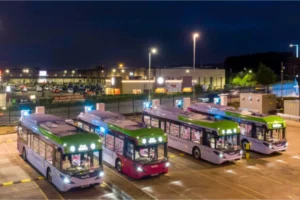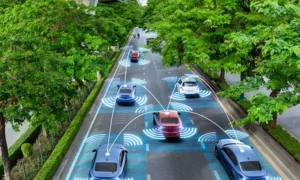Low Traffic Neighbourhoods (LTNs) are a low cost, easily implementabelsolution that can contribute to a much needed and fast urban transformation and ‘radical’ reimagining of what and who public space is far, according to a new report.
It said that LTNs should be part of longer-term programmes to
improve quality of life across London, and authorities should link LTNs to the Mayor’s Transport Strategy 2041 goal that there will be ‘at least 3 million fewer daily car trips and one quarter of a million fewer cars owned in London’, despite likely substantial population growth over
that period . Early evidence suggesting that LTNs might
reduce car ownership and use by around 20% among residents implies they could contribute strongly to this goal, the report said.
LTNs for all? Mapping the extent of London’s new Low Traffic Neighbourhoods considers the effectiveness of LTNs, focusing on London as an example.
Since March 70 LT’s were put in place across the London boroughs with a number of cities outside of London, including Bristol, Leeds and Manchester have introduced or are debating the possibility of LTN’s.
The report, by Prof Rachel Aldred and Dr Ersilia Verlinghieri from Westminster University’s Active Travel Academy with climate charity Possible, said that LTNs are important to help alleviate traffic flow on bigger roads. Some schemes have proved controversial, with arguments that filtering residential streets pushes traffic elsewhere, on to main roads and high streets, forcing congestion, noise, pollution and danger elsewhere.
The report goes on to say that while LTNs can improve conditions in many residential streets, they are not appropriate everywhere, so other
interventions need to be considered in other types of street.
“People are not only affected by changes on their own streets: people not living in high streets may go there to shop, and people not living on main roads may go there to access public transport. Conversely, LTNs may provide people living outside them with improved walking and cycling routes. In other words, interventions that affect a street do not only
impact those living on the street itself.
“One advantage of implementing LTNs is that it can make it easier to control motor traffic more widely. Where motor traffic can use any road without restriction, changes made on main roads may be ineffective or lead to unwanted consequences, as drivers shift to using residential streets. Controlling residential traffic can and should support
measures to control and reduce the impact of motor traffic
on other road types,” said the report.
In conclusion, the report said: “LTNs enjoy majority support as a planning tool and this has been growing. However, they are controversial when
introduced, and it is important to get details right as well as to allow trials time to bed in and for monitoring and evaluation.”
It found that the vast majority of people lived on streets that could be part of such schemes and there was
There was minimal difference on the likelihood of this for households on lower incomes, people from minority ethnic groups, or those with disabilities.
The London boroughs that have not implemented LTNs, particularly those with high levels of deprivation (such as Haringey) should do so, and this will increase London-wide equity of LTNs. Many boroughs without LTNs
are suburban, Outer London boroughs with high car ownership. From an equity perspective, people without cars may be particularly disadvantaged in such settings; for instance as car use is assumed and public transport
sparser. It is important that LTNs benefit those residents too, and not only those in deprived areas of Inner London, said the report.
The full report can be read here: https://static1.squarespace.com/static/5d30896202a18c0001b49180/t/5fb246b254d7bd32ba4cec90/1605519046389/LTNs+for+all.pdf





















